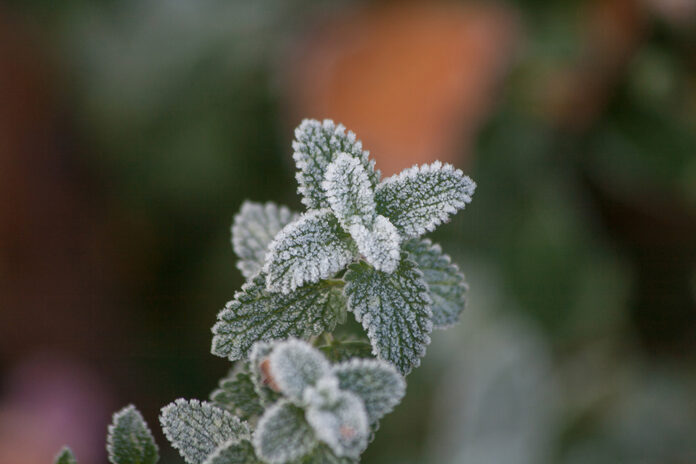

By Rita Bricker
As I write this, today’s high temperature is projected to be 71 degrees. However, you aficionados of “Game of Thrones” know to heed the warning. Winter is coming.
And with winter comes the potential for frost or even a freeze in our low desert. Light frost is defined as temperatures between 29 and 32 degrees. Significant damage will occur only to succulents or very tender plants at those temperatures.
A moderate freeze or killing frost occurs when temperatures dip as low as 25 degrees. The moisture in plant cells freezes and bursts, damaging most vegetation and foliage. Even root-hardy perennials can be significantly affected.
A drop in temperature to below 25 degrees constitutes a severe freeze that can lead to desiccation and death to almost all plants.
So how can we prepare for the eventuality of an overnight frost or freeze?
First, know what kinds of plants you have and what their cold tolerance is. Many cool-season vegetables like broccoli, spinach, peas, carrots, lettuce and radishes can thrive in the cold, as can most plants native to our area. On the other hand, bougainvillea, geraniums, succulents, citrus trees and perennial bulbs are quite sensitive to frost and must be protected.
Next, determine what kind of protection is best suited to your plants. Citrus and young fruit trees will benefit from having their trunks wrapped all the way to the ground with burlap, towels, or even cardboard. Citrus leaves may turn dark from a freeze but by wrapping the trunk the all-important root structure will be protected. Trunk-wrapping can safely remain on the trees for the entire winter.
Vulnerable potted plants should be brought indoors when frost or freeze is predicted. If just a light frost is on the way, it will probably be sufficient to bring these tender plants up under the porch and near the walls of the house which may retain some warmth from the daytime sun.
Shrubs may need to be covered overnight. It is important to cover these plants all the way down to the ground and to do so before dusk so daytime warmth from the soil is not lost. Sheets, blankets and towels will all suffice. White frost cloth, which can be purchased by the foot at most garden centers, is especially nice to use because it can be left on the plant even during the daytime, as it allows sunlight to penetrate.
Other methods include warming water-filled milk jugs in the daytime sun and placing them around sensitive plants, along with some covering. The jugs retain warmth longer than the surrounding air and ground. You may also water your plants just before a freeze. As the moisture is released from the wet soil it actually warms the air around the plants.
A final thought: Leave freeze-damaged plants alone until spring. When you see new growth sprouting, then you can prune away any frost damage.
This story appears in the January issue of InMaricopa.












![Alleged car thief released without charges Phoenix police stop a stolen vehicle on April 20, 2024. [Facebook]](https://www.inmaricopa.com/wp-content/uploads/2024/04/IMG_5040-218x150.jpg)




![MHS G.O.A.T. a ‘rookie sleeper’ in NFL draft Arizona Wildcats wide receiver Jacob Cowing speaks to the press after a practice Aug. 11, 2023. [Bryan Mordt]](https://www.inmaricopa.com/wp-content/uploads/2024/04/cowing-overlay-3-100x70.png)